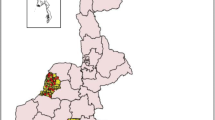Abstract
Little quantitative information is available on animal power in the Nile Valley in Sudan, despite that it is being used in the area for centuries and playing an important role in agriculture in the present day. A survey was conducted to assess draught oxen management and its association with field capacity and efficiency at the farm level and to identify potential areas for intervention. A sample of 50 farmers was selected for this purpose using the systematic random sampling technique. The main management parameters discussed were animal health, feeding, housing, work strategy and care for yoke and plough. The results showed that most of the farmers poorly manage their animals, and this was reflected in low working speeds and field efficiencies. The main dimensions of poor management were in veterinary care (78 % did not take their animals to the veterinary centre), feeding (66 % feed their animals shortly before work) and care for yoke (80 % did not follow daily care measures for their yokes) and plough (74 % did not follow plough care measure before and after work). Low working speeds (0.90–2.0 km/h) were recorded by the majority of the farmers (64 %). The majority of the farmers (70 %) recorded field capacities between 0.06 and 0.10 ha/h, while all of them worked at high field efficiencies of >86 %. The only parameter that significantly affected field capacity was the yoke-related wounds (p = 0.019). Extension advice and capacity building in husbandry and working practices were identified as principal entry points for intervention.
Similar content being viewed by others
References
Abubakar, M.S., Tekwa, I.J. and Ahmed, M., 2009. Effects of soil physical and mechanical properties on field efficiency of ox-drawn mouldboard plough in Yola, Adamawa State. Agricultural Engineering International: the CIGR Ejournal. Volume XI 1369--2137-1.
Akila, N. and Chander, M. 2010. Management practices followed for draught cattle in the southern part of India, Tropical Animal Health and Production, 42(2), 239--45.
Fall, A., Pearson, R.A., Laurence, P.R. and Fernàndez-Revera S., 1997. Feeding and working strategies for oxen used for draught purposes in semi-arid West Africa. ILRI, Nairobi, Kenya. 76 pp.
Gbadamosi, L. and Magaji, A.S., 2004. Field study on animal draught power for farmers in Zuguma village of Niger State, proceedings of 5th International Conference and 26th Annual General Meeting of Nigeria Institution of Agricultural Engineers (NIAE), 26, 84–85.
Joubert, B., 1999. Matching draught oxen and primary tillage implements for work. In: Pearson, A., Wythe, S., Joubert, B., O’Neill, D. and Simalenga, T. (eds), Management and Feeding of Animals for Work, Proceedings of a Workshop at Fort Hare University, Alice, Eastern Cape, p101-106.
Makki, E. K. 2004. Shambat Farmers Experience in Utilizing Draught Animals in Agriculture. Ahfad Journal, 21(1), 53--63.
Makki, E. K. and Jamaa, L. S., 2012. Animal traction in Sudanese agriculture: a comparative study. Agricultural Mechanization in Asia, Africa and Latin America, 43(3), 9--14.
Nengomasha, E., 1999. Feeding and managing donkeys for work in Zimbabwe. In: Pearson, A., Wythe, S., Joubert, B., O’Neill D. and Simalenga T. (eds), Management and Feeding of Animals for Work, Proceedings of a Workshop at Fort Hare University, Alice, Eastern Cape, p 121–131.
Pearson, R. A., 1998. Draught animals and their management: The future in rain-fed agriculture. Annals of Arid Zone, 37(3), 233--251.
Acknowledgments
This research is published as part of the activities of the Development Partnerships in Higher Education project no. 804 (capacity building of rural farmers and extension workers applying draught animal technology in agriculture to aid food security) funded by the British Council and DIFD. I thank Dr. R. Anne Pearson for her comments on the manuscript.
Author information
Authors and Affiliations
Corresponding author
Rights and permissions
About this article
Cite this article
Makki, E.K. Husbandry, working practices and field performance when using draught oxen in land preparation in Shambat, Nile Valley, Sudan. Trop Anim Health Prod 46, 145–151 (2014). https://doi.org/10.1007/s11250-013-0465-5
Accepted:
Published:
Issue Date:
DOI: https://doi.org/10.1007/s11250-013-0465-5




